Photo Gallery - Anti-Car Measures
Examples of various techniques increasingly used by highway engineers to reduce road capacity and frustrate drivers, usually for no discernable safety benefit.
On Reddish Road in Stockport, the council have conveniently placed a central island right next to a bus stop, so whenever a bus stops a queue of following traffic builds up because it is impossible to overtake.
This major radial dual-carriageway in Hull has been reduced from two lanes to one by turning the left lane into parking bays and a cycle lane. This is a widespread trend on four-lane urban main roads, and inevitably reduces capacity and increases congestion.
Another example of "one-lane syndrome", this time in Glasgow. Here there isn't even the excuse of parked cars already effectively reducing the road to a single lane. You couldn't overtake a milk float along here. (acknowledgment to www.speedcam.co.uk )
Yet another example, on Kingsway in Widnes, Cheshire. The function of this road has to some extent been superseded by a bypass, but even so it is unreasonable to completely prevent overtaking in this way. The picture clearly shows a tailback of vehicles behind a red van.
Here a two-lane turnout from a roundabout onto the dual carriageway A56 near Runcorn has been reduced to one lane, with the pre-existing right turn lane greatly extended. Heavy vehicles leaving this roundabout will accelerate very slowly up the hill, and this layout imposes a significant delay before they can be overtaken. Unbelievably, this and the previous picture were given as examples of "good practice" on a cycling website. "Good practice" in needlessly frustrating drivers, presumably.
Another one-laned dual carriageway on the A565 between Preston and Southport in Lancashire. (courtesy of LMARS )
Here the uphill overtaking lane has been hatched out on a three-lane stretch of the A4130 (formerly A423) in Oxfordshire. But, strictly speaking, it is still legal to enter the hatched area to overtake in the uphill direction. (courtesy of Apex Corner )
Central hatching on Boston Avenue, Runcorn, Cheshire. What on earth is the point of this compared to a conventional single white line? It narrows the carriageway, giving drivers less room to pass cyclists, but does not prevent overtaking here as the hatched area is bounded by dotted lines. The speed limit has always been 30 mph here even though at this point the road is fairly open and not built up - there are houses further along in both directions.
Another example of wide central hatching in Lower Bredbury, Stockport (with a Gatso lurking in the shade).
An astonishing and highly-dangerous looking anti-overtaking scheme on the A39 near Barnstaple in Devon (photo courtesy of Richie Graham)
The junction of Manchester Road with the A6 Wellington Road North in Heaton Chapel, Stockport, where the width of the northbound carriageway has been reduced to a single lane by building out the kerbs. This causes long tailbacks in the rush hour and often delays fire appliances, as it is situated on a key route from one of Stockport's principal fire stations.
Stockport Council have recently been doing their best to restrict movement around the borough by banning left turns for no obvious reason, and extending kerbs to prevent them. This particularly obstructive example is at the junction of George's Road and Wellington Road North (A6).
This one prevents traffic emerging from Sainsbury's turning left on to Knightsbridge, the main road linking the east and west sides of the town centre. This example was later removed following numerous complaints.
A general view of the junction shown above. The prohibited left turn is diagonally opposite.
This picture and the three following show a "traffic calming scheme" in the village of Lower Stretton, on the A559 south of Warrington just south of M56 Junction 10. This involves the installation of chicanes, making vehicles entering the village give way to those leaving it. There is also a 30 mph limit along a road that is at no point continuously built up. These chicanes are potentially highly dangerous, and likely to encourage head-on collisions. When leaving the village after taking these pictures, I had to brake sharply to avoid a car coming the other way, even though I technically had priority. This picture shows the chicane at the southern end of the village.
In between the two chicanes. This picture shows clearly that, while this is an environment with several potential hazards, it is not continuously built up. In my view the speed limit should be increased to 40 mph and the chicanes removed.
The northern chicane by the Ring O'Bells pub. At busy times these chicanes can result in substantial queues.
A close-up of the chicane in the previous picture
Another chicane on the approach to the Cheshire village of Daresbury, birthplace of Lewis Carroll. The limit was extended for about 200 yards into a former NSL area. The NSL used to end around where the parked cars can just be seen in the shadow.
The chicane seen from the other side. At least the rest of the road is still NSL!
Looking back towards the chicane, showing a long length of former NSL, now a rural 20.
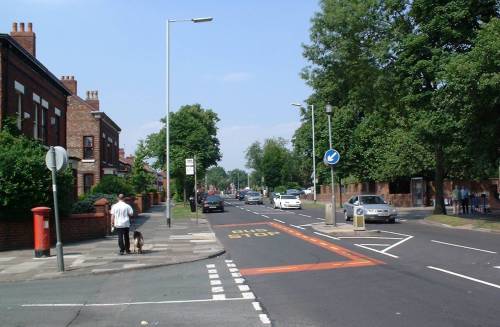

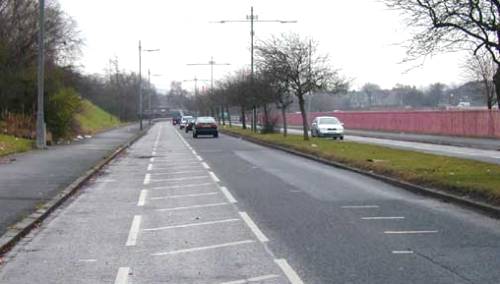
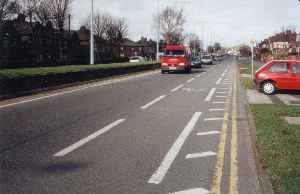
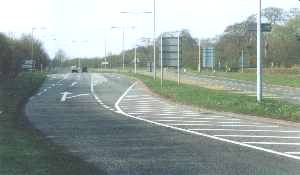
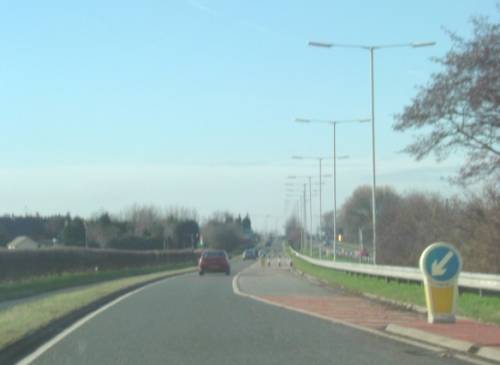
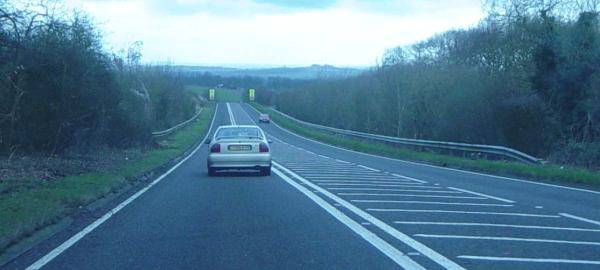
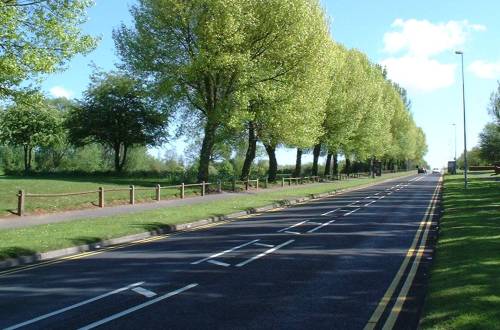
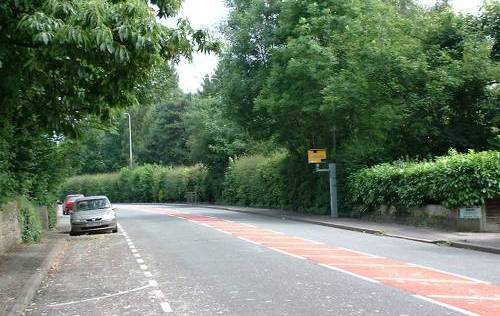
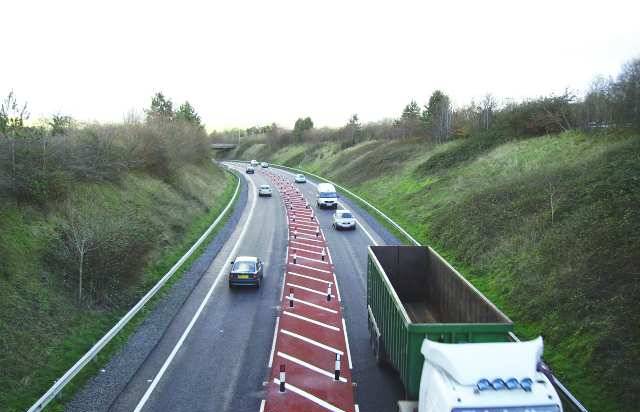
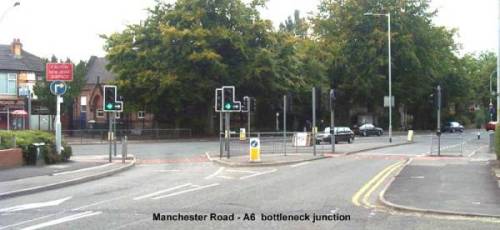
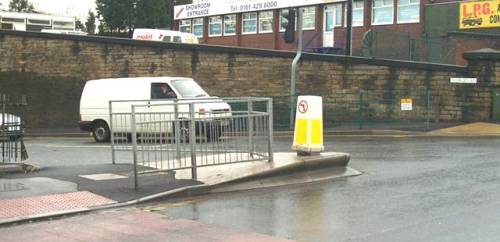
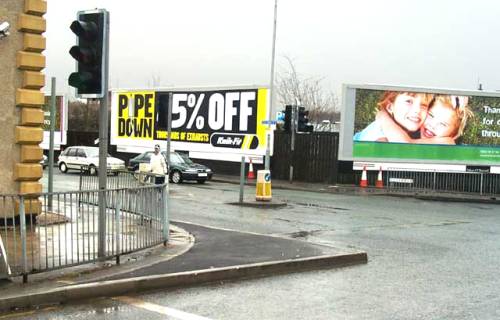
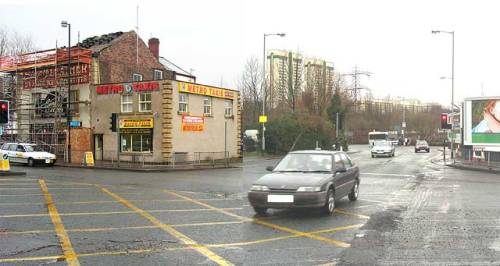
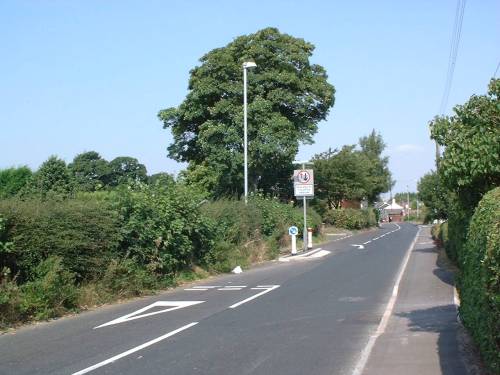
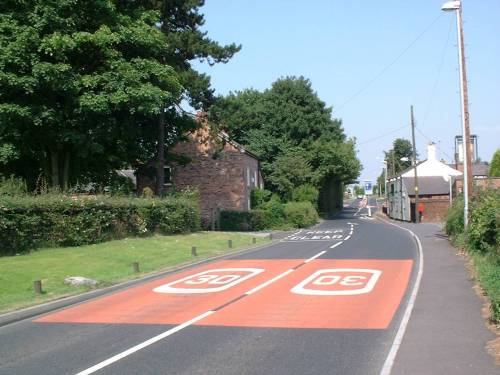
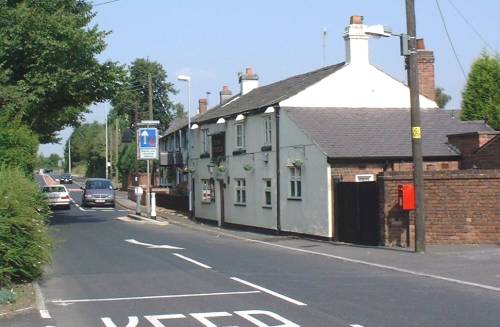
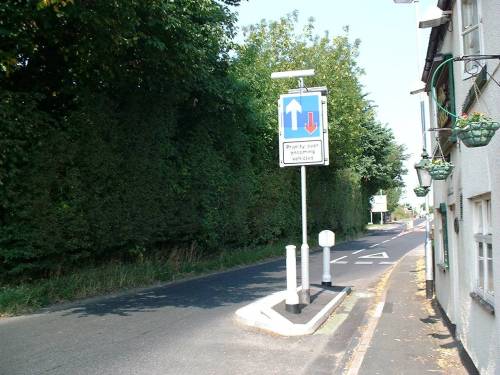
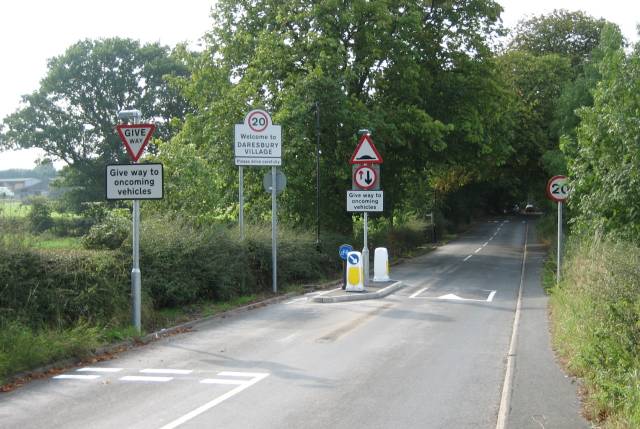
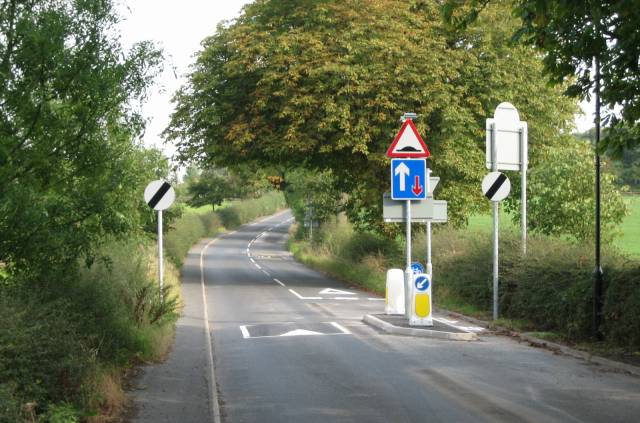
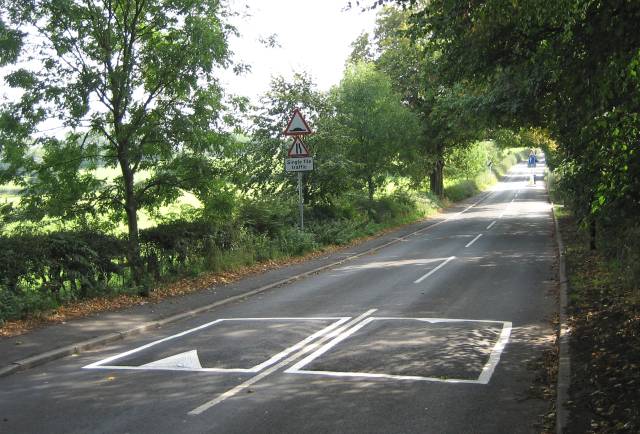
Also see the gallery showing how Stockport MBC have excelled themselves on Broadstone Road
(Last updated December 2006)